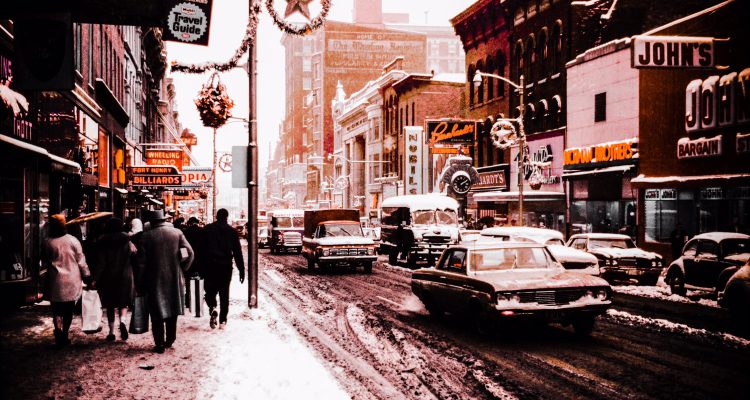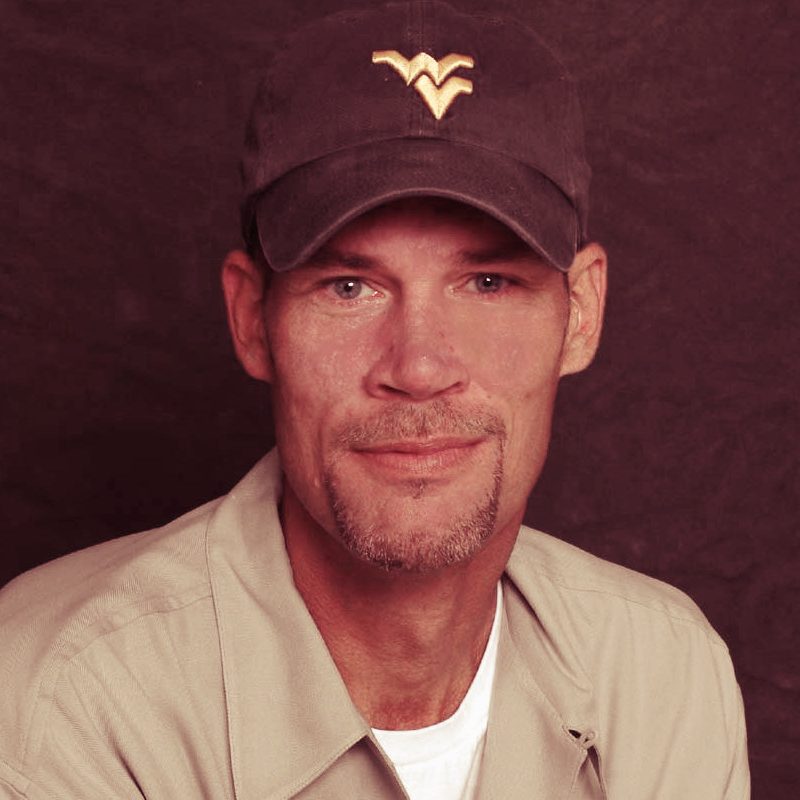Photography by Walter Smith Photography; archived by James Thorton
(Writer’s Note: This is the ninth in a series of stories that will concentrate on the organized-crime scene in and around Wheeling during the past century.)
A Plumber, Murders, and the Evidence
“Sammy the Plumber” showed up, and no one ever knew it. His real name was Sam DeCavalcante, and he worked for the Bonanno crime family in New York City and New Jersey. He was big time. He made life-and-death decisions, literally, and Paul “No Legs” Hankish was someone he knew.
They weren’t partners or associates, just facilitators, and federal investigators found a link between the two mobsters they could prove. There was this marijuana deal worth $250,000 among three parties, and Hankish was the one in the middle. The FBI invited “Sammy the Plumber” to Wheeling to testify that the deal was real and that Hankish never made good on it. Initially, lawyers for DeCavalcante told the feds that their client was too ill to travel, but “Sammy the Plumber” showed up anyway.
Hankish had waived his right to a jury trial, so it was U.S. Judge Robert Merhige serving as the judge and the jury for this 218-count indictment against one of the most celebrated mobsters in Wheeling history. Most of the city’s residents had heard of Bill Lias, and those once close to Hankish and his operations are familiar with names like Jimmy Griffin, Jessie Anderson, Buddy Jacovetty, Paul Asher, and Chuckie Joseph. Unlike Lias, though, Hankish was known to be more vicious when payback was paid back.
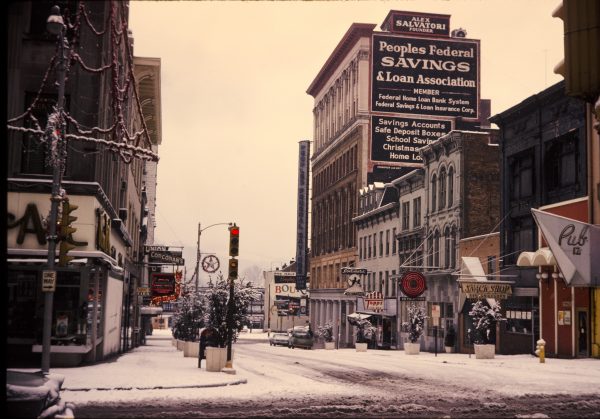
Both Lias and Hankish earned reputations for robbing from the rich and giving to the poor, but it was Hankish who was implicated in far more unsolved murder cases than Lias ever was. Wheeling police investigators did question Lias about the car-bombing that took both of Hankish’s legs in January 1964, but included within the long list of allegations against Hankish in 1990 was conspiracy to commit murder.
In other words, he ordered hits. Murders. Cement boots. Sausage. Swimmin’ with the fishes.
Men were stabbed and/or shot; women were strangled and/or burned. A couple of cases involved men who were shot in the groin area and a few others in which private parts were chopped off. Not a single accusation against Hankish, though, insinuated the mobster ever pulled a trigger or held the blade himself.
“I guess he felt he needed to do what he needed to do to stay in control of something that was growing pretty large in the 1980s,” explained retired FBI agent Tom Burgoyne. “Through the years he got involved with a lot of different things that didn’t even come close to making the same money as the gambling. Not even the cocaine. The gambling stuff – the spot sheets and bookies and the poker machines – that’s where he made the most cash, but I guess it wasn’t enough.
“There were so many indictments in the case against Hankish because the FBI, the Wheeling Police Department and Ohio County, the IRS, and the West Virginia State Police were all part of the investigation, and every agency found what they found because of how broad his activities were during those years.”
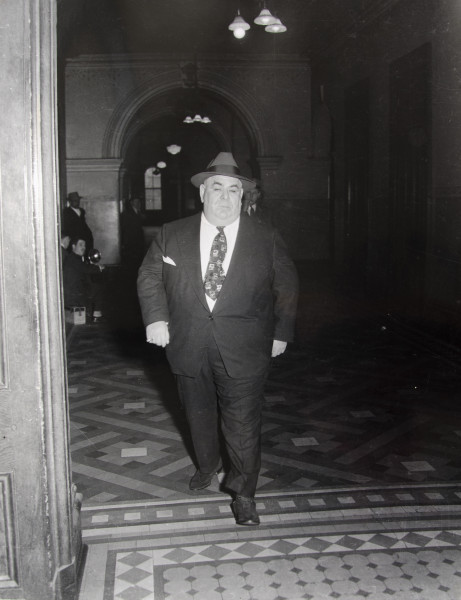
The Reality Was Striking
Kim Loccisano is one of the most veteran journalists who resides in the Upper Ohio Valley today, and although her opportunities to cover East Ohio via the Martins Ferry Times Leader are limited these days, she takes advantages of the chances allotted to her.
Twenty-five years ago, Loccisano was a full-time reporter for the T-L and she worked with Patricia Neal to provide stories about the Hankish trial. Her busiest beat in those days concerned the Wheeling-Pittsburgh Steel Corp., but with 89 federal charges against Hankish – some of which dated all the way back to 1957 – more than one reporter was needed to make sure the readership was satisfied.
Those 89 counts involved crimes such as making threats, extortion, drug- trafficking, gambling, tax evasion, and defrauding the government. The Hankish Mob, the feds insisted, had operated a drug ring since 1981 that pushed at least half of the pot and coke trafficked in the Wheeling area.
“I didn’t get to spend a lot of time in the courtroom. My time was minimal as far as that was concerned, but I was involved with the overall coverage of the Hankish trial,” Loccisano explained. “The primary reporter on the trial was Trish (Neal), and she did a great job with all of it.
“There were a lot of different things going on in the Valley at that time, too, including a lot of crazy things with Wheeling-Pittsburgh, but the Paul Hankish trial was receiving a lot of attention from all the local media outlets, and from media from Pittsburgh, Columbus, and from all over the country,” she recalled. At that time I researched just how far his network extended. It was easy to see that it crossed the Ohio River into East Ohio.”
Easy because she recognized the names on the police reports from many announcements about charitable donations made by business owners from Steubenville to Bellaire. Suddenly, for Neal, Loccisano, and the editors of the Times Leader, it was decision time.
And that decision, Loccisano has concluded, was the correct one.
“I think the readers of the Times Leader were surprised to see some of the names of businessmen from East Ohio on the front page of the newspaper, and I recall that being a very difficult situation for us,” Loccisano said. “We weren’t used to that, and that’s when we had to remember that we weren’t the ones making the news. We were the ones reporting the news. It’s was a big and important lesson for me as a reporter.
“It was something that had to be covered from beginning to end. It was not something that you could show up for five minutes before,” she continued. “It wasn’t about grabbing a quote, a headline, and a photo so you could leave as quickly as possible. Not at all. We had to do our homework with the members of law enforcement, and that’s why I believe the local readership got the best coverage that any other media outlet could have offered.
“I’m not just saying that. I believe it because at that time we had the ability to make the right connections with the investigators who were involved with the case. And you also had to give the case and the stories about the trial the respect they were due. It was important to people on both sides of that river, and that’s something I know we realized at the time.”
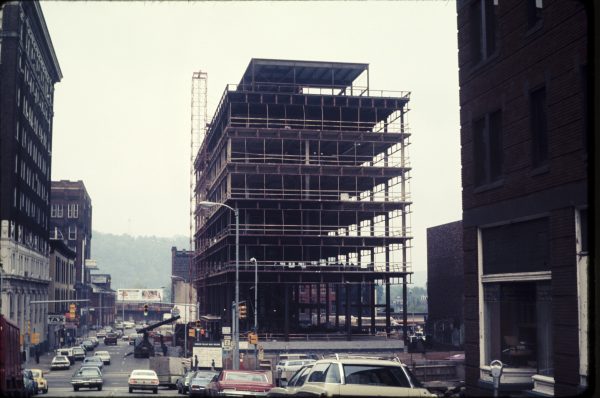
So important, it unseated the fact that Wheeling-Pitt had begun the decline that would ultimately lead to the closures of the company’s facilities in Steubenville, Mingo Junction, Martins Ferry, and Beech Bottom in the past 25 years.
“At the same time this Hankish trial was taking place, there was also a story about the bosses of Wheeling-Pitt confirming the letter of liquidation, so that was one of the first signs of the end of the steel industry in the Valley, and that was in 1990,” Loccisano said. “Wheeling-Pitt was vital at that time in this Valley, and usually when there was a story on that company, it was at the top of the page every time. Especially a story about liquidation. But not during the Hankish trial.
“That goes to show you how seriously our editors at the Times Leader were taking that trial and how important they believed it was to our readership. Everyone was talking about it,” she continued. “If someone had yet to see the newspaper one day, but they saw me, they asked. They wanted to know about that day’s story, and they wanted to know what I saw in the courtroom. Everyone was very, very curious because I think we all had our suspicions.”
Neal, Loccisano, the Times Leader editors, and even the publication’s owners were learning lessons as soon as the 218-count indictment was released to the press. One of the biggest realizations for most involved was the fact all of those rumors could actually be true.
“We were all pretty young back then, and I am sure there were national reporters in that courtroom with us and we didn’t even realize it because of our lack of experience,” Loccisano admitted. “While I helped cover that trial, I remember realizing that the legends involving Bill Lias and Paul Hankish were not legends after all. It was real, and it needed to be understood as real.
“He was a real person, Hankish was, and those who were testifying were real people, and the fact that all of things he was charged with happened to other real people,” she said. “I think one of the biggest lessons that it taught me as a young reporter was not to be judgmental. I had to offer a balance of information because we were there to be impartial to our opinions.”
As a reporter in Martins Ferry, Loccisano was offered a lot of hearsay about the spot sheets, the poker machines, the hookers, the drug-trafficking, and the call-in bookies, but one of the infamous tales often told in those days, the reporter reported, was that the Hankish Mob extended far, wide and all the way east and west. She once thought those claims were products of local folks exaggerating.
“I know when a group of reporters sat down at the Times Leader to take a really good look at our how large his organization was, it struck us. I remember that very clearly,” Loccisano recalled. “I still get a chill when I sit down and think about that trial and his network. Plus, as local reporters writing about local events and local government, there was seldom a reason for any of us to go to the Federal Courthouse in Wheeling, and one of the reasons why it was a big deal was that even back then we had to go through a metal detector.
“That was a very big deal back then, and so was being in the same courtroom as Paul Hankish. You always heard so much about him, and you would see him here and there, but never in that setting. Never in a federal courtroom,” she said. “But what we found out was that his network went much further than any of us imagined when that trial first began. We heard what we heard, but it was all local stuff. No one ever imagined Hankish was in on criminal activity all over the country.”
When Loccisano was inside the courtroom the first couple of times, she looked around a good bit to see the faces within, and she spent some time wondering about why they were there. Witnesses? Family members? Associates?
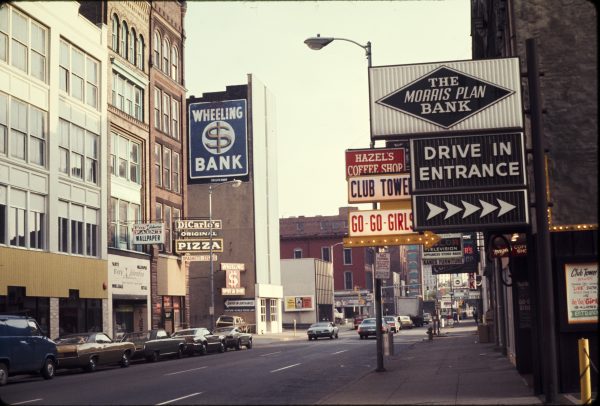
“Another clear memory that I have from being in that courtroom was that every single person who would come into it looked very, very serious,” Loccisano explained. “It wasn’t Mayor’s Court, and it wasn’t a local meeting. It was a federal court case, and it was the reality in the Valley at that time.
“I saw Paul Hankish many times, and he always had his entourage with him, and that was just expected. It became normal to see him and those men with him, and it became normal to hear about this and to hear about that. It was normal,” she said. “But what I never saw was Paul Hankish by himself. Never.
“What he did he did, and a lot of that was proven in that federal courtroom. He knew it, and that’s why his attorneys worked out the plea agreement with the prosecution halfway through the trial. His reach was way farther than anyone knew at the time that trial started, and there were times when I was writing and was just amazed at how much none of us ever knew until those prosecutors began offering the evidence and the testimonies.”
To this day citizens of Wheeling who recall the era of the Hankish Mob insist the streets of downtown Wheeling were bustling with activity, yet they were safer than they are today. Hankish took care of it, and “Big Bill” Lias did the same before him. Many believe both mobsters had a little “Robin Hood” about them, and whether or not it was a part of public relations did not matter. There was good to consider despite all of the alleged evils, and that was the excuse most used when excusing the criminal activity when it was in plain sight.
“People can say whatever about all the organized-crime stuff, but one thing you can say about the era of Paul Hankish is that he did help people in the neighborhoods. And that’s not done anymore,” Loccisano said. “It’s not done, and I don’t think the people of today realize that. ‘Big Bill’ did it, and so did Hankish.
“I can tell you that I had never given much thought to what Paul Hankish did before I saw him in that courtroom. I had heard this and that, but I was as guilty of that as anyone else in this area,” she admitted. “As far as I am concerned, Paul Hankish is still part of the fabric of this area just like anyone else who has lived here. He lived here, he did what he did, and the history is the history. That’s fabric right there.”
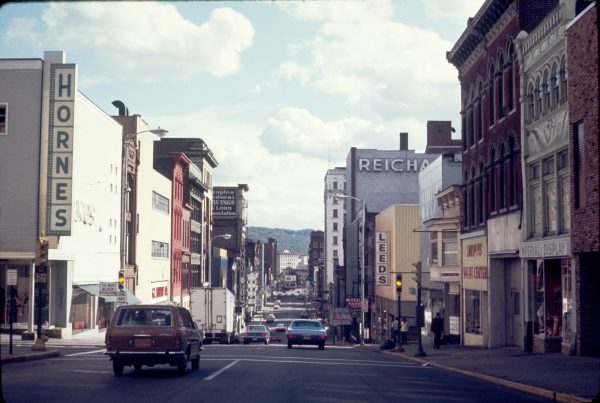
The Feds Had the Goods
DeCavalcante owned a legal business. It was a plumbing supply store in Kenilworth, N.J. Hence the nickname.
But DeCavalcante also was a Mob boss operating out of Newark in the late 1960s and throughout the 1970s. Illegal gambling, loansharking, and labor racketeering are his reported activities but likely only because of the fear and money involved with his line of work.
“No one was going to say anything about him or any of his activities because of what happened to the people who did,” Burgoyne explained. “He was big-time in Jersey and New York. He had a lot of power. He got what he wanted and when he wanted it.
“Anyone who has watched the “Godfather” movies knows the character Marlon Brando played in those films. He was the Godfather. He was Vito Corleone,” he said. “Well the voice that Brando used in those movies was copied from ‘Sam the Plumber.’ That’s how well-known his Mafia connections and power were back in those days.”
And then one day in August 1990, “Sam the Plumber” was in Wheeling, W.Va.
“We had to have them subpoena them all, and then we had to go find them, and in some cases it had been a couple of years since we had spoken with someone,” Burgoyne explained. “So in those cases we had to find out where they were in 1990. Sometimes it would take us days to locate those witnesses, and we also had some witnesses that were never recognized as witnesses by the local media. ‘Sam the Plumber’ was one of those witnesses.”
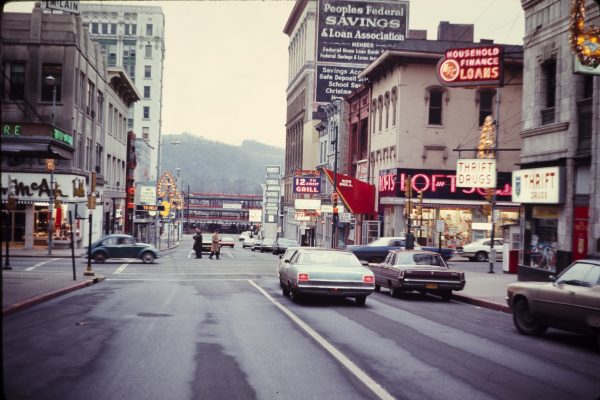
His presence was a powerful push for the federal government’s case against Hankish because it was a sign to Judge Merhige that Hankish’s East Coast connections were done with the Wheeling mobster once and for all.
“DeCavalcante was a Mafia family boss who had books written about him, and all of a sudden he’s sitting in Wheeling. No one knew he was in Wheeling except for Bill Kolibash, me, and Bill’s secretary,” Burgoyne said. “He had a reputation, and he’d be quick to tell you that he was the pacifist among the heads of that Mafia family. That means he was the one that tried to stop activities that would end up in an assassination.
“He was a pretty good unique guy who had a Wheeling connection because his niece went to Wheeling College. He stayed at the McLure, and my daughter Erin served him breakfast, and he gave her a $10 tip, and he kissed my wife Kathy’s hand in Kolibash’s office in the way the Italians did it then. Pin-striped suit, the rings, and the mannerisms … everything you now see in all of the Mafia movies.”
Burgoyne and his FBI colleagues wanted DeCavalcante to testify against Hankish because they had learned that Hankish manipulated himself into a deal involving a lobster fisherman, a boat load of pot, and a delivery in Motor City. But it was DeCavalcante’s weed.
“We had no idea that he was coming, so when he showed up in Wheeling, it was a complete surprise,” Burgoyne reported. “The facts of this case included the fact that Hankish stopped a murder hit by saying that he had to pay DeCavalcante $250,000 for a marijuana delivery, and he actually collected the money from a guy who was the lobster fisherman from Rhode Island. He was involved with the Columbians and had moved a shipload of marijuana from Philadelphia to a city in Michigan.
“The word was that there was a hit out because ‘Sam the Plumber’ didn’t approve of the unloading of the marijuana without his knowledge. But the fisherman actually paid the money,” he said. “So we knew that Hankish received the money, and we were sure that it was another one of his scams, so we wanted ‘Sam the Plumber’ to testify that he had never received the money.”
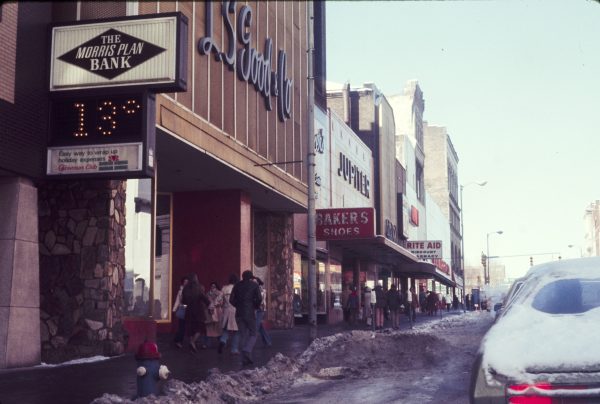
And ‘The Plumber’ turned on Hankish.
“‘Sam the Plumber’s’ testimony was really something, and I appreciated that he came to Wheeling because when his attorney contacted us, he said Sam was ill and not doing well,” Burgoyne said. “After the attorney said he wasn’t coming, we forgot about it, and then he showed up.
“I was totally shocked, and then he helped the case. He went up there and told the judge that he didn’t get a dime from Hankish. He said that the only thing that he ever got of value from him was a drink in Ruth’s Chris Steakhouse in North Miami,” he continued. “He said, ‘I don’t know Paul Hankish, but I know ‘Pauly No Legs’ and he never gave me anything more than that drink.”
What was considered midway through the trials was that Hankish had had enough, and that’s because the bookies squealed on him, and so did his killers, his protectors, and his mistresses and madams. Most of the testimonies were products of plea agreements with associates involved with the Hankish Mob that were caught doing what they did under the “No Legs” umbrella. And ‘Sam the Plumber’s’ testimony seemed like the last pounded nail.
“All of the investigating agencies had parts of the counts. For example, something the state police uncovered could have been count 93, and the the IRS investigation could have resulted in count 143 to 149, and then the FBI counts may have been 68 to 73,” Burgoyne said. “And all of the counts were spread throughout all of the indictments, so the trial may have seemed to go all over the place if they weren’t expecting what we were.
“Part of it was gambling; part of it was murder-for-hire, conspiracy to commit murder, drug-trafficking, and illegal gambling. There were a lot of different crimes that led to an indictment with that many counts,” he recalled. “There was a diverse group of witnesses with a diverse group of law enforcement people who were responsible for the evidence, and I think the evidence caught everyone in the Ohio Valley by surprise.
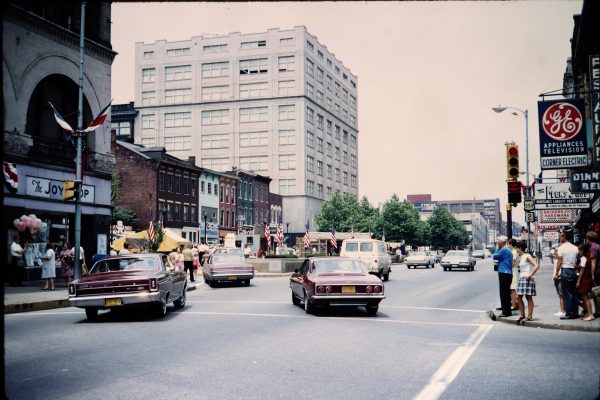
“The people in the Valley knew Paul Hankish in all stages of his life, and it really started when he had his legs blown off,” Burgoyne. “After that Hankish became something of a folk hero because he survived that assassination attempt. He wouldn’t give up the guy who did it to him.
“So he was this folk hero to all of these minor thugs, and it was the same with a lot of professionals, too. And no one really thought that there was murder involved. They just thought he was just another bookie, but he was more than that,” the former FBI agent continued. “And another thing the people didn’t realize was that when a wife lost her collection of jewelry in a breaking and entering case, it was he who was orchestrating that stuff.”
And on Oct. 26, 1990, Paul Hankish was sentenced to 33.5 years in federal prison and was fined $72,500 after pleading guilty to one count of violating RICO laws, three counts of using the telephone to gamble, three counts involving cocaine distribution, and two counts of filing false income taxes. He could have received as many as 77 years and a $1 million fine, but Judge Merhige seemed not to believe Hankish could possibly be guilty of all of the charges against him.
“I don’t believe all of the things I’ve heard about him; nobody can do all of the things people say he’s done,” Merhige said in the courtroom. “Nobody could be that bad. I think he did some bad things and he’s going to get a severe sentence, but nobody could be that bad.”
Burgoyne, though, thinks many people in the Wheeling area were finally able to place the pieces in the puzzle once all the facts began rolling out via the local media.
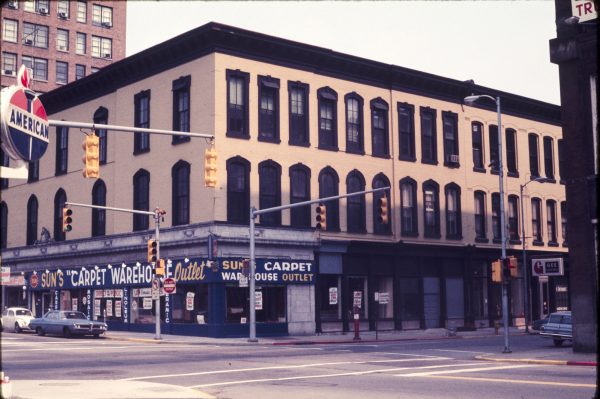
“I think the people, at the end of it all, said, ‘Thank God he’s been put to sleep. He’s been convicted; he’s going to prison.’ And they didn’t have to worry about any of that stuff going on anymore,” Burgoyne said. “I think most of them then thought that it should have happened a long time before it did.
“He had great legal advice because he had some very good attorneys. In some cases Paul Hankish had the best Mob attorneys on the East Coast,” he said. “Hankish was able to stay out of trouble for a long, long time and that’s why we formed the investigative task force that we did, and why there were so many indictments and witnesses when this case was initially released to the public.
“People can think what they want about Paul Hankish. I know some people still refer to him as a Robin Hood, and he did do some of that stuff. Not as much as Lias did, but some. But the man went to prison, and not because he was Robin Hood.”


